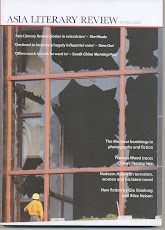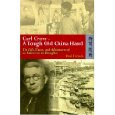
I’m always interested in what exactly was being exported to Britain and Europe from China in the eighteenth and nineteenth centuries. All this talk of China’s economic growth and exporting power as if it’s something new has been annoying naïve for years. Until the mid-nineteenth century China was easily the world’s largest economy – in 1820 it accounted for 32% of global GDP compared with Europe’s 26%. China’s output was as big as Europe, the US only (1.8%) and Russia (4.8%) combined. Strangely you don’t this simple fact often in the boom, boom, go, go pieces that appear in newspapers and magazines from breathless visiting journalists on a daily basis.
One export to England I wasn’t aware of, until reading Bryce Courtenay’s excellent The Potato Factory, was high quality dyes and pigments that were used by forgers making Bank of England fake notes. Banknote forgery was big in the early to mid 1800s through underground workshops in London and Birmingham and the criminal artisans who specialised in this work would use only dyes and pigments imported from China as well as India and Dutch Batavia.
Not sure where the dyes come from now the forgers use though perhaps some quality Chinese dyes and pigments are heading Pyongyang way to make their infamous US$100 Superbills?
Courtenay’s book by the way is a great novelisation of the life of Ikey Solomon, the famous Jewish fence of Whitechapel who may (or may not) have been the inspiration for Dickens’s Fagin in Oliver Twist. He ended up transported to Van Diemen’s Land (now more boringly known as Tasmania) where his legendary reputation just seems to have grown if anything. The book came out in 1995 and apparently the Australians turned it into a TV mini-series in 2000 though I just came across it in Melbourne on a recent trip. There's been some complaints about the historical accuracy but it's a good read.
One export to England I wasn’t aware of, until reading Bryce Courtenay’s excellent The Potato Factory, was high quality dyes and pigments that were used by forgers making Bank of England fake notes. Banknote forgery was big in the early to mid 1800s through underground workshops in London and Birmingham and the criminal artisans who specialised in this work would use only dyes and pigments imported from China as well as India and Dutch Batavia.
Not sure where the dyes come from now the forgers use though perhaps some quality Chinese dyes and pigments are heading Pyongyang way to make their infamous US$100 Superbills?
Courtenay’s book by the way is a great novelisation of the life of Ikey Solomon, the famous Jewish fence of Whitechapel who may (or may not) have been the inspiration for Dickens’s Fagin in Oliver Twist. He ended up transported to Van Diemen’s Land (now more boringly known as Tasmania) where his legendary reputation just seems to have grown if anything. The book came out in 1995 and apparently the Australians turned it into a TV mini-series in 2000 though I just came across it in Melbourne on a recent trip. There's been some complaints about the historical accuracy but it's a good read.








No comments:
Post a Comment